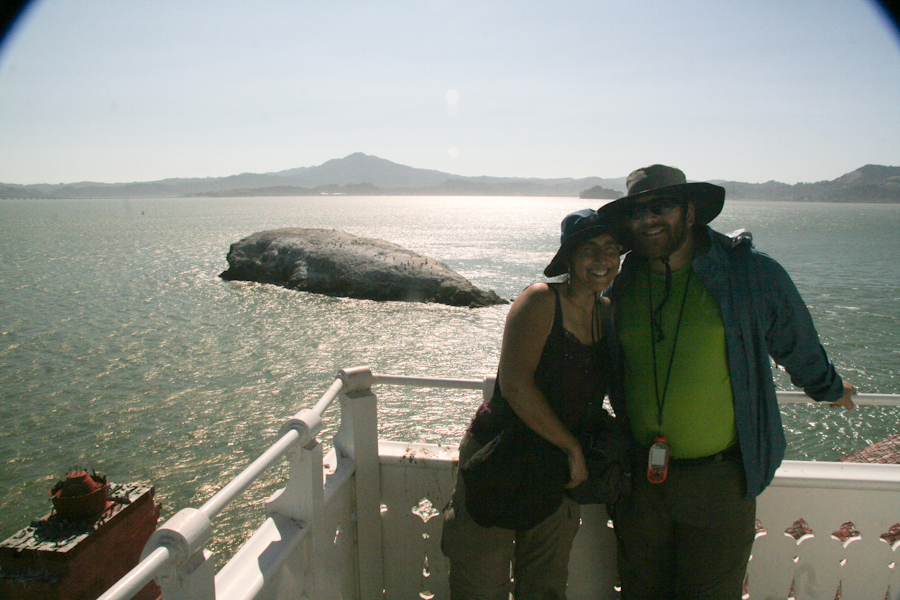

We have made yet another trip around the sun, and our marriage is another year old. It's now old enough to have a beer in a bar, and we're still happy together. Due to our uncertainties about Oberon, we chose not to go away for two nights this year. Instead, we picked a lovely local spot from Lucy Policek's wonderful Offbeat Overnights in California, one we had been intending to check out for years: East Brother Light Station. Everyone knows about Alcatraz, and all of us Bay Areans know about Treasure Island, Yerba Buena Island, Alameda, and Angel Island. Most of us from the East Bay have also seen Red Rock, right next to the Richmond Bridge, although we probably didn't know it had a name. (This tiny, entirely undeveloped lump of rock is currently for sale for $5 million). But there are even more islands in the San Francisco Bay. Near the neck between the San Francisco and San Pablo Bays are four small islands, East and West Brother and East and West Sister. The Sisters are very small and are also entirely undeveloped. West Brother Island is larger but also undeveloped, a home for gulls, cormorants, pelicans and seals. West Brother Island, with Mt. Tamalpais in the background.
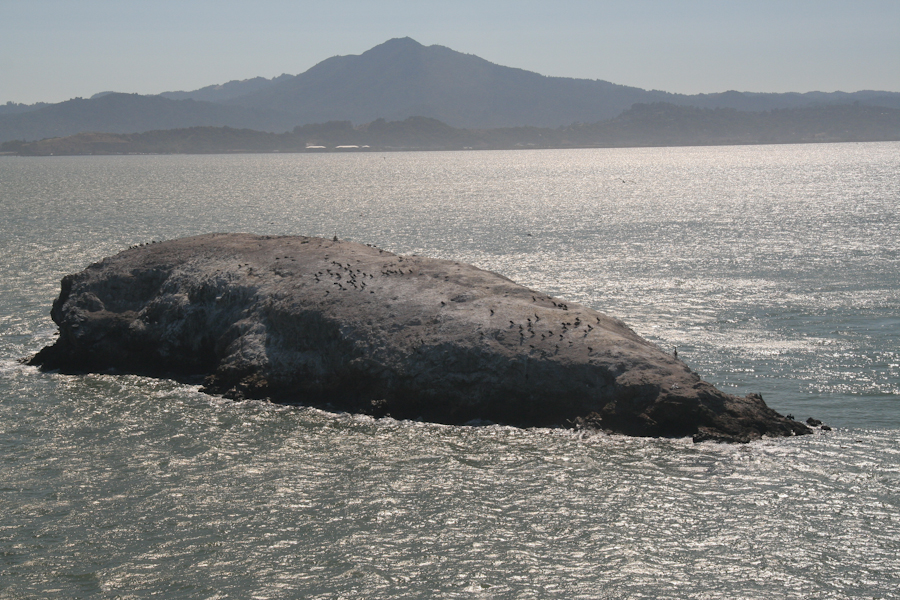
But the Coast Guard blasted the top off of East Brother Island and built a lighthouse on it in 1873. Not the traditional, round tower style lighthouse, this is a beautiful Victorian building. Like so many other things, in the 1970's, the lighthouse was threatened with destruction. In 1979, a non-profit group was formed to restore the lighthouse and open it as a unique and romantic bed and breakfast.
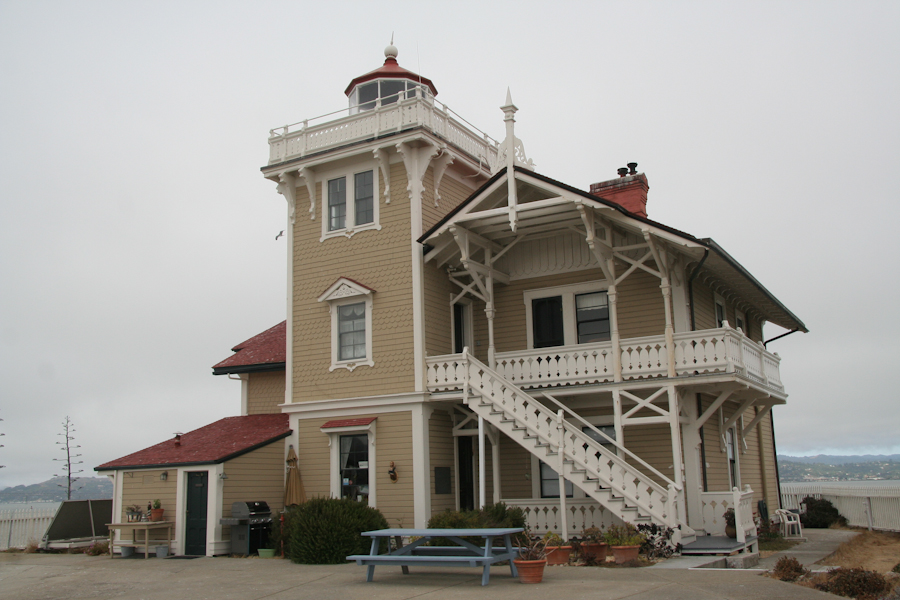
One of the two hosts makes trips out to the Point San Pablo Yacht Harbor in, believe it or not, Richmond, to pick up visitors with this little boat and carry them across the swift channel to the island.
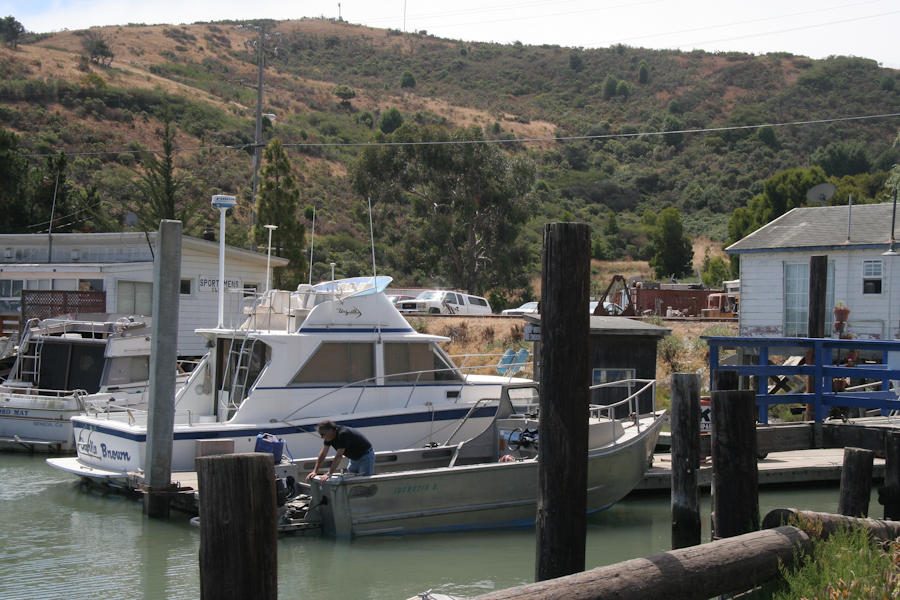
To get to the Yacht Harbor, you must go out to this lovely peninsula at the extreme northwestern end of the East Bay. This area is very close to the Chevron refinery and the Richmond Bridge. You have to drive several miles along the edge of a restricted area owned either by Chevron or the US Navy. It's called "Navy Fuel Depot" on the maps, so these distinctions may blur.
From the road, we got our first view of West and East Brother Islands.
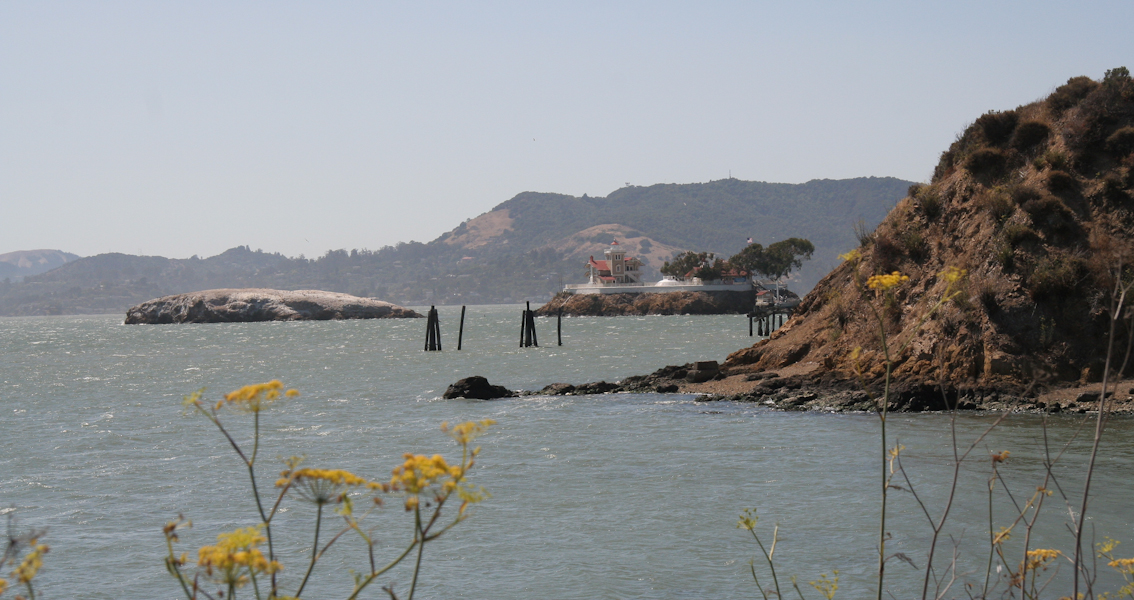
Then you drive across to the Yacht Harbor on far side of the peninsula, over the sort of steep, windy, poorly-maintained sort of road that Eric and I just adore.
Point San Pablo Yacht Harbor from the road up on the hill.
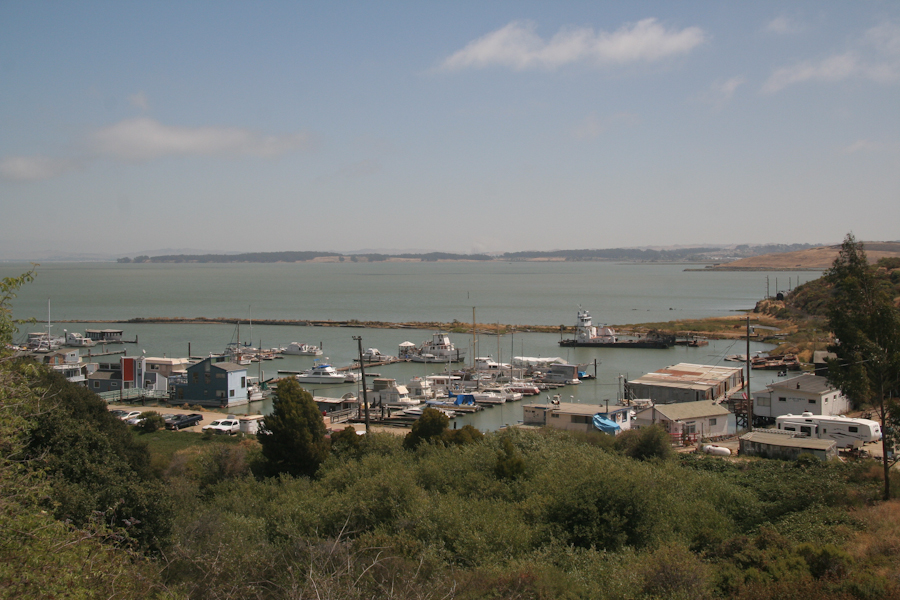
Point San Pablo Yacht Harbor was an incredible place. It was much funkier and friendlier than the chi-chi Berkeley Marina or even more chi-chi San Francisco Marina. As soon as we pulled up, a cyclist with a couple of dogs rode up to us. She carefully said, "Are you looking for..." and trailed off.
"East Brother Light Station?" I said.
"Oh, OK," she said. "I didn't want to spoil it in case it was a surprise." She went on to tell us where to park, where to find the boat, and where to find the bathrooms. She wasn't someone who worked for the lighthouse; she was just someone with a boat in the harbor. We thought this was all amazingly cool.
We crossed these now-defunct railroad tracks on the way out from the parking lot to the Yacht Harbor.
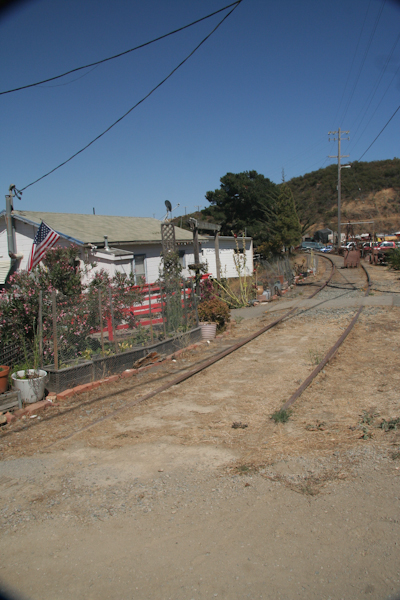
As we got further out into the Yacht Harbor, the cool funkiness of the place became more apparent.
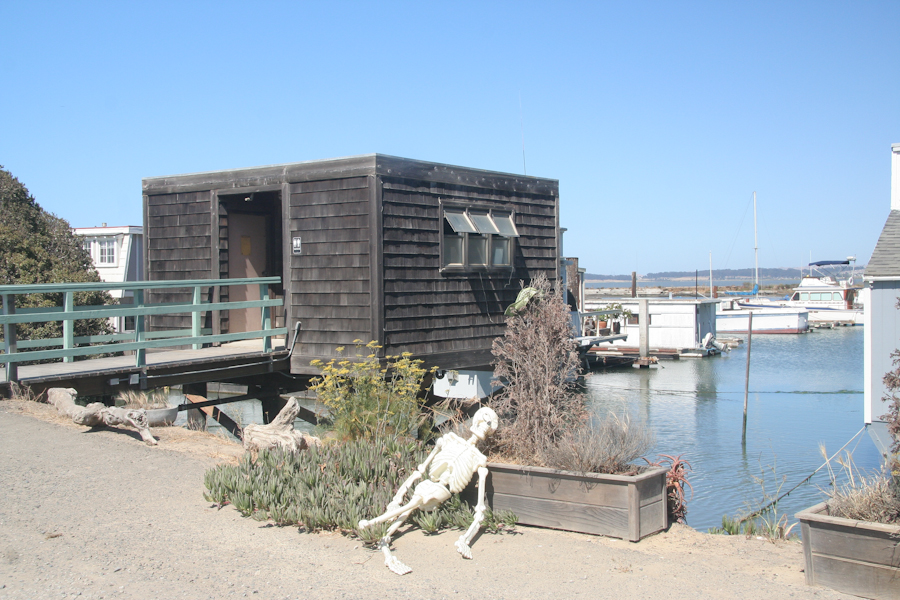
Someone had built kind of a shack on top of a boat, the way some people extend the sides of the bed of a pick-up truck.
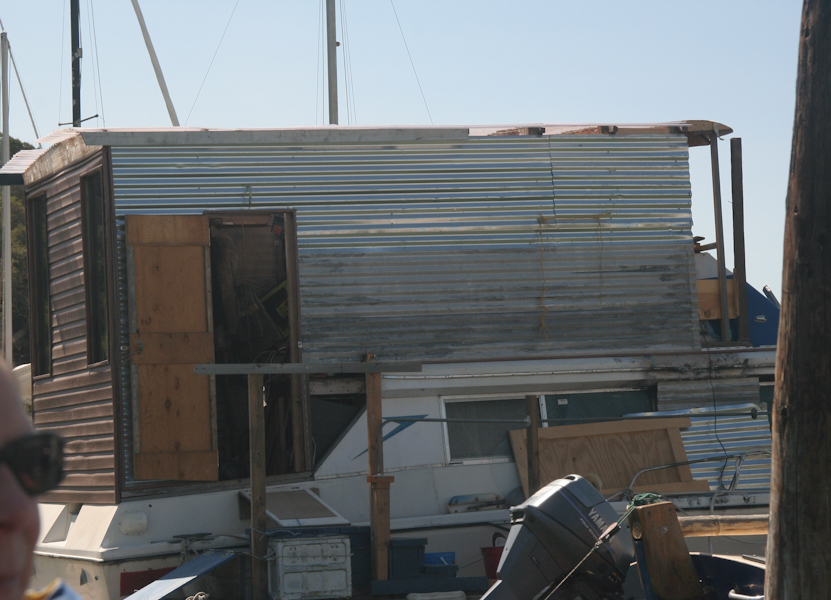
Other people had made more attractive improvements to their boats.
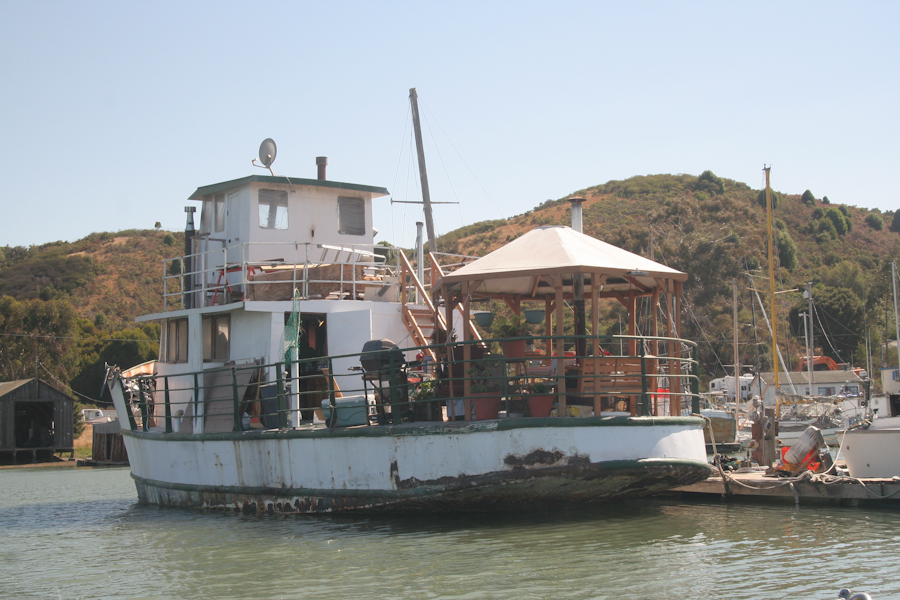
The whole place was so cool, it made me proud to be from the East Bay.
In the boat, we rode past the most extreme tip of the East Bay.
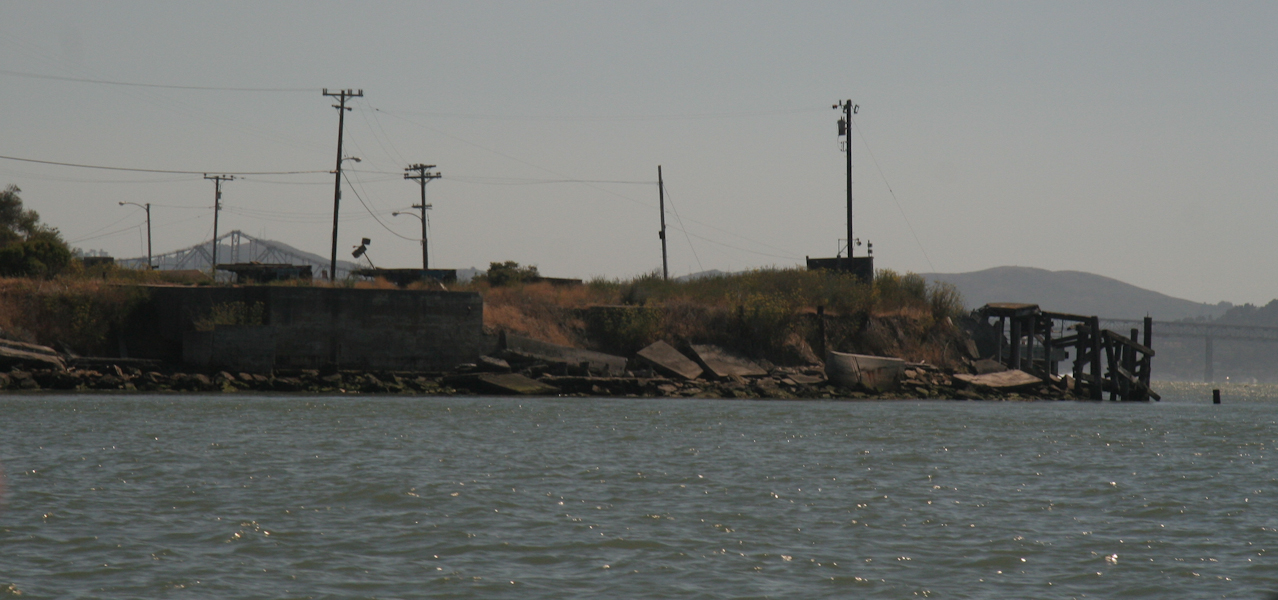
East Brother Island from the water.
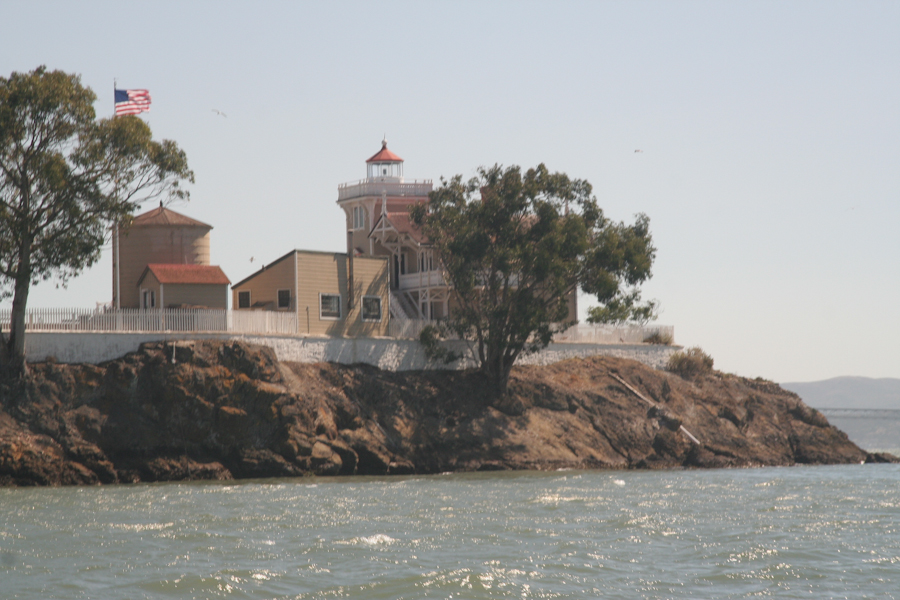
The island is not handicapped-accessible, because the edges of it slope too steeply. The Coast Guard did not plan for people in wheelchairs in 1873. So, in order to get to the island from the boat, you have to climb up this ladder.
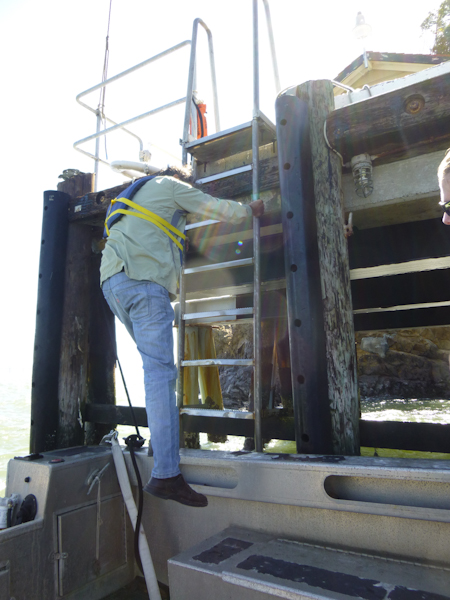
Then Richard, one of our hosts, hoisted the boat up to the platform so he could unload our belongings.
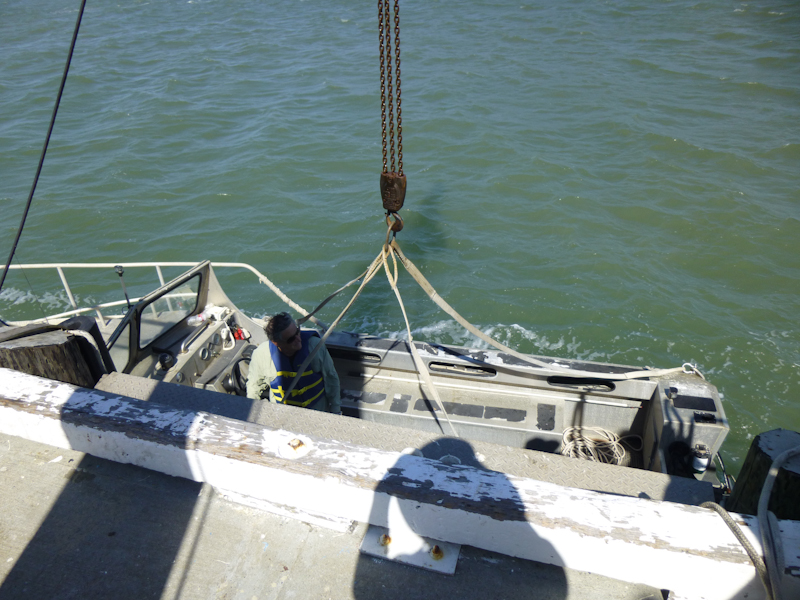
Eric at the landing.
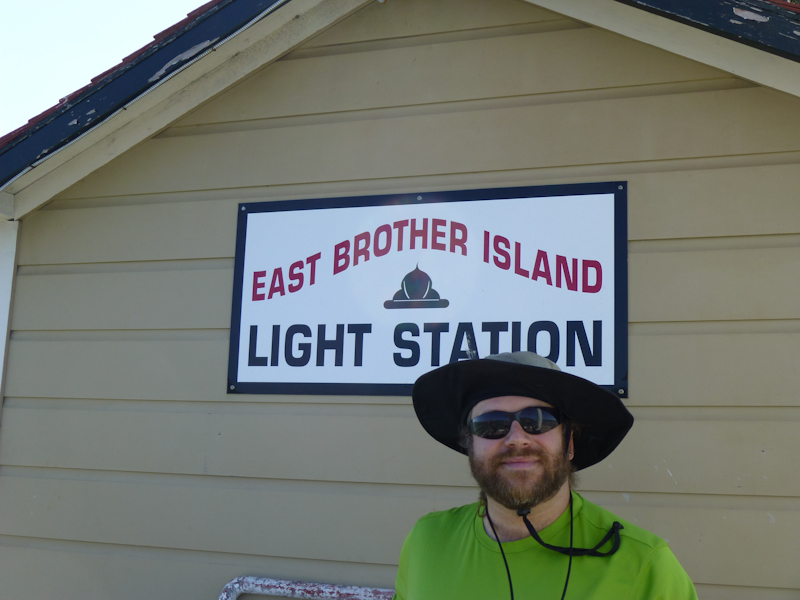
Richard leading the other guests, Eric and Judy, up to the lighthouse.
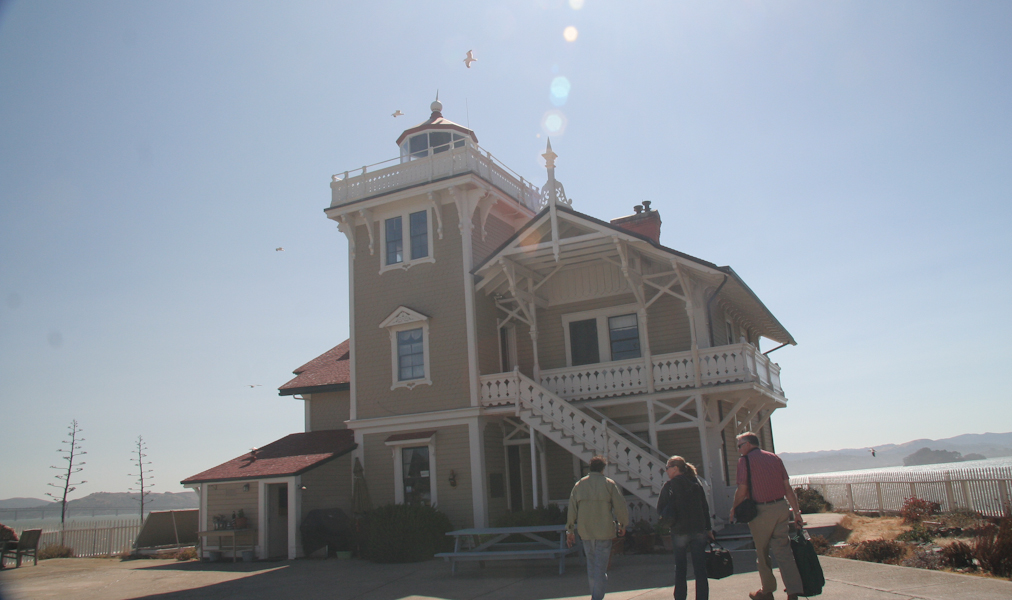
We were invited to go up to the top of the lighthouse to admire the view. Here is Eric climbing up the steep stairs.
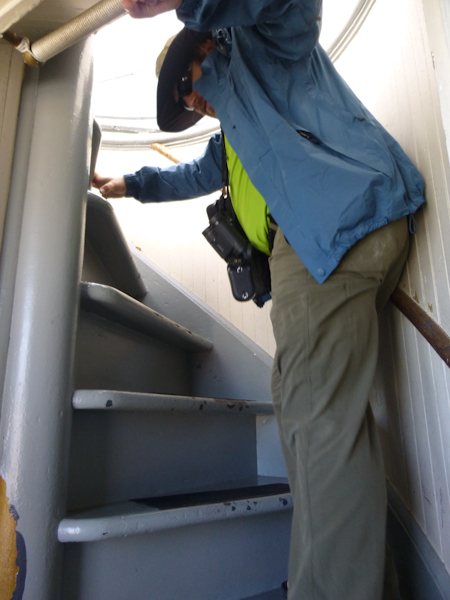
Through the nearby Richmond Bridge, we could see the City of San Francisco.
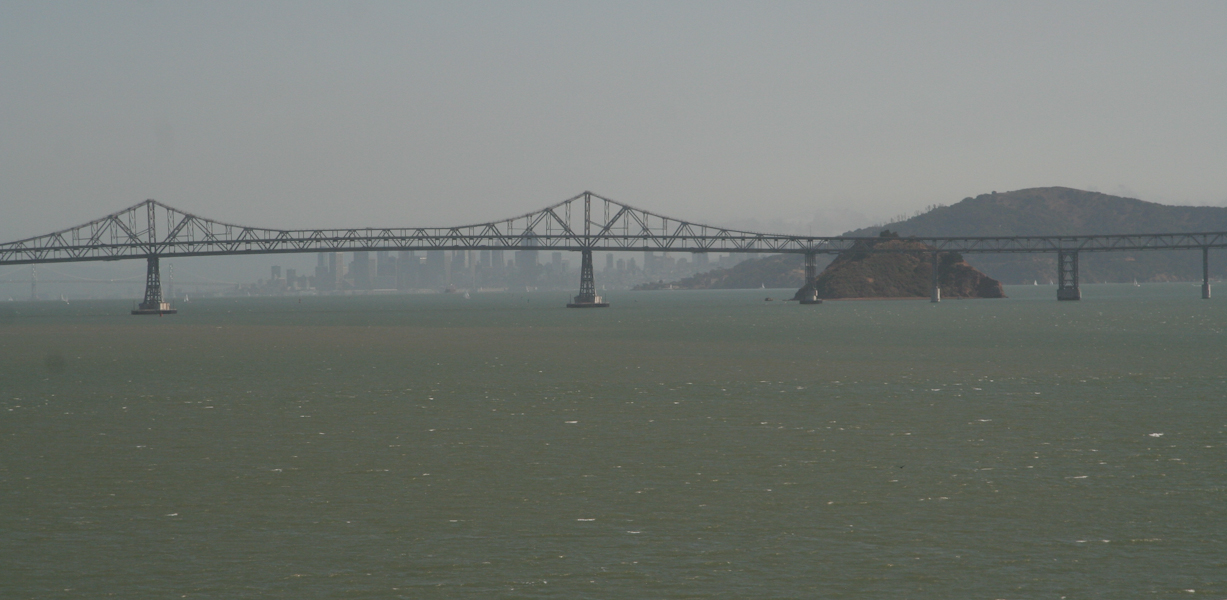
The Two Sisters.
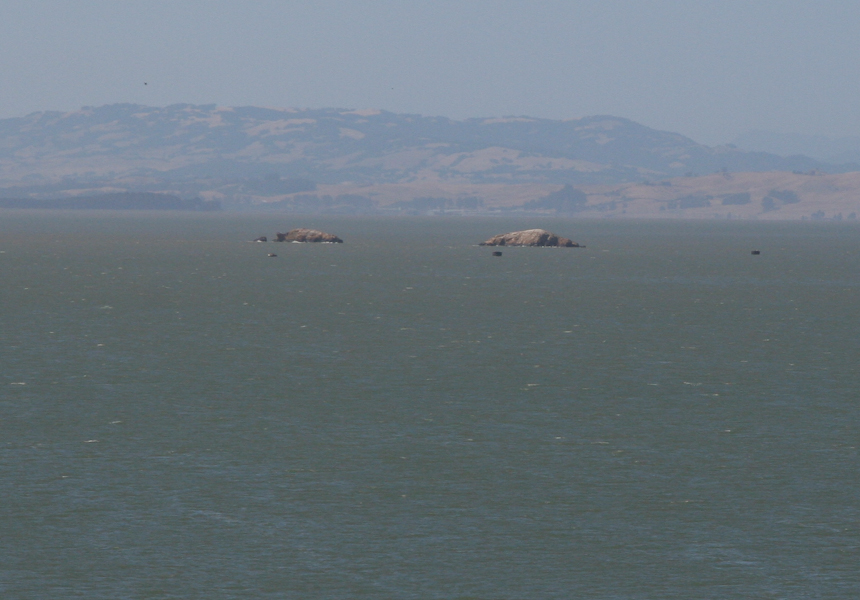
The view of the rest of the island, which, as you can see, is quite small. To the lower left are the hosts' quarters, in the center is a water storage tank (there is no water source for the island, so they collect and process all the water used on the island), and on the right is the foghorn building. Although there were several guest rooms in the lighthouse itself, Eric and I stayed in the one guest room in the foghorn building for more privacy.
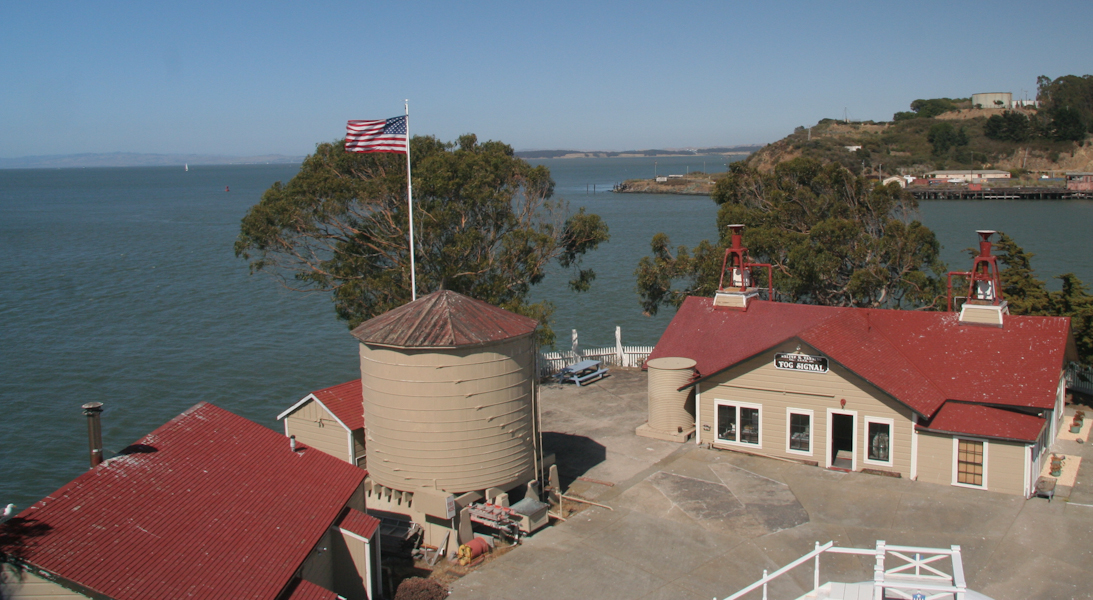
A sailboat being photographed from a helicopter.
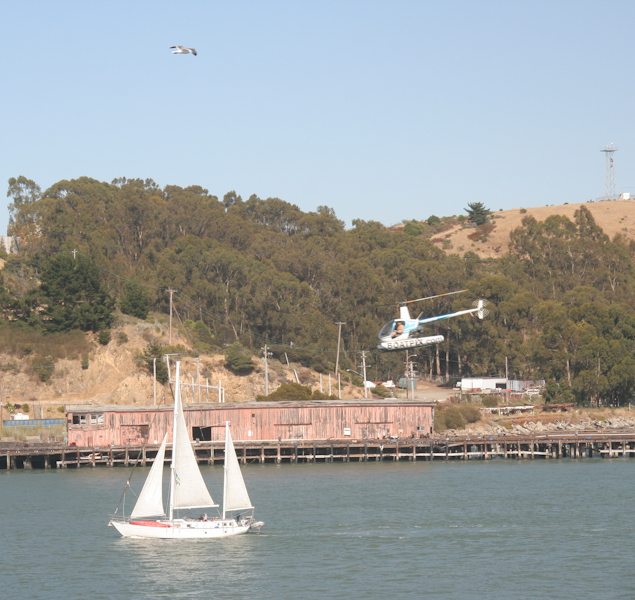
The wildlife on West Brother Island was fascinating. Here, you can see two endangered Brown Pelicans, and a Harbor Seal further up on the rock. The bird in the lower right is a fairly common Double-Crested Cormorant.
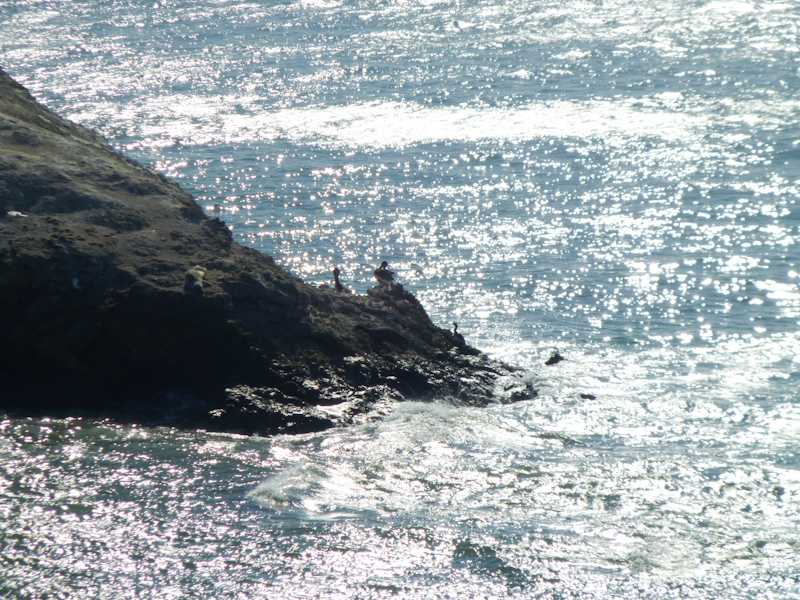
While we were up there, we looked at the lamp itself. Seven weeks before our visit, the Coast Guard had replaced the old lamp with a new, energy-efficient LED. The light is visible from a distance of 21 km (13 mi).
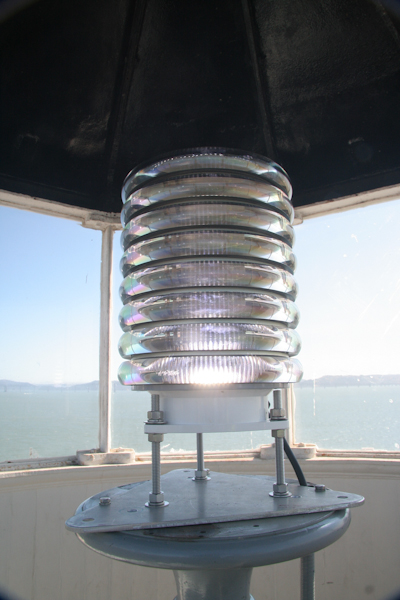
Richard setting up hors d'oeuvres, with guests Katherine and Samuel, who had already been on the island for a night. What a great spot for a snack!
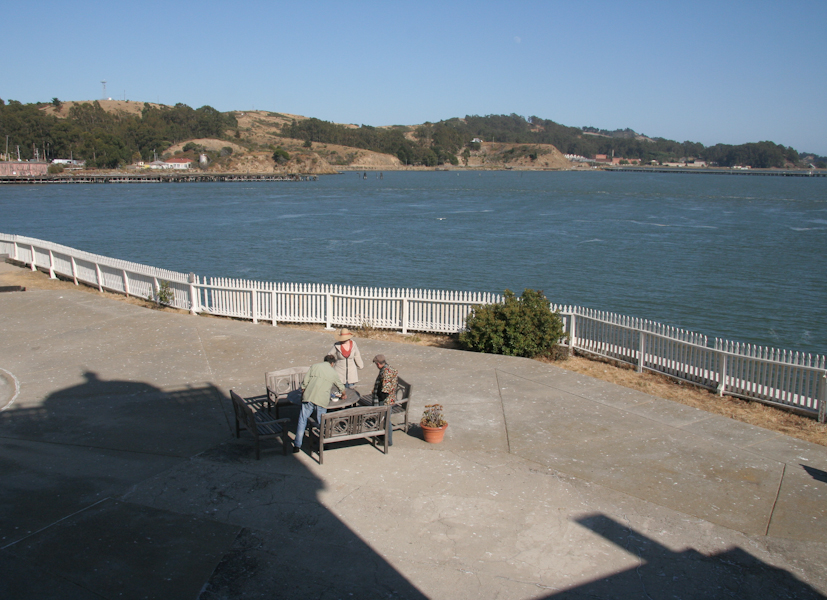
Eric waving from the top of the lighthouse.
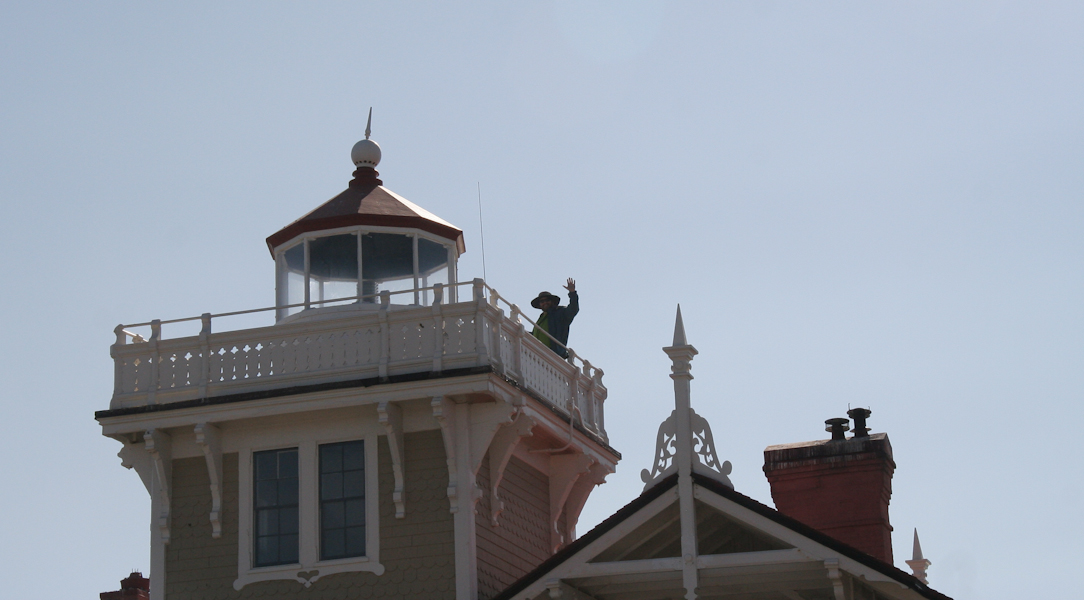
We had very much enjoyed talking to world travelers Eric and Judy up at the top of the lighthouse, but we also had a great time meeting Katherine and Samuel. They had gotten married a week before, at a steampunk wedding. They were calling this weekend their "mini-moon," as they have plans to take a more exciting honeymoon in Italy later.
The Richmond Bridge in the foreground and the west spans of the (Emperor Norton Memorial) Bay Bridge in the background.
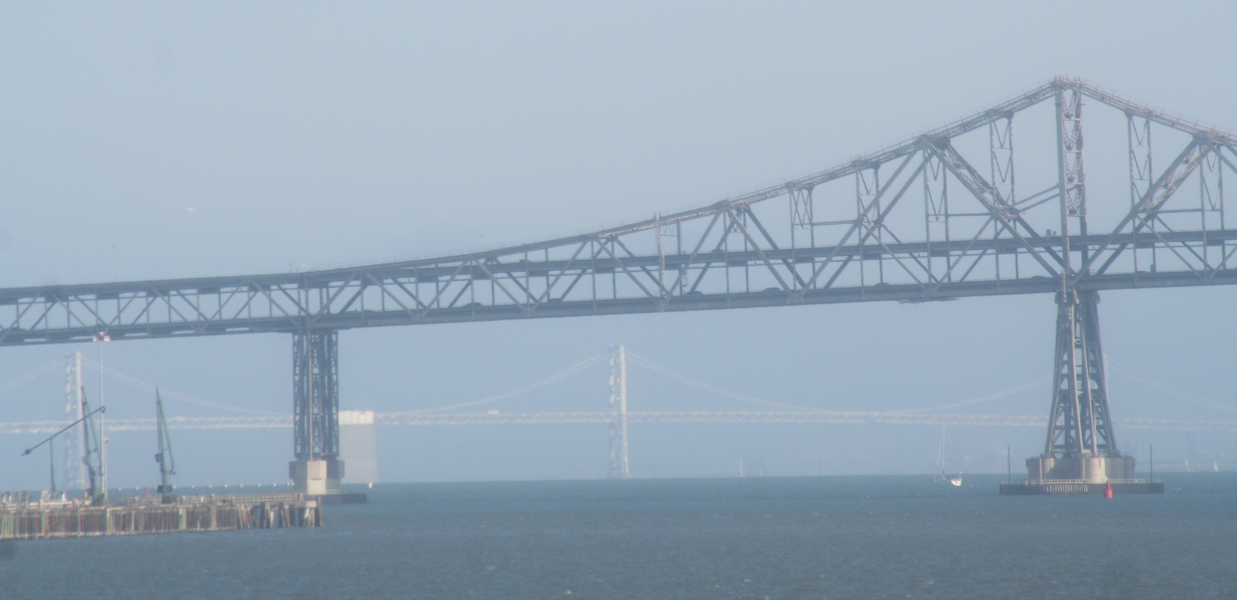
Richard served us plates of crostinis, vegetables and a variety of crackers and cheese (served with a cute lighthouse-handled knife) and champagne. He told us some of the history of the island and the lighthouse, as I summarized above. He and his co-host, Jude, have been living at and working on the island for three years. We had so much fun talking to everyone that we barely had a break to regroup between hors d'oeuvres and dinner.
Dinner, other than a quickly-remedied misunderstand about whether pork constituted white meat, was quite tasty. The pork tenderloin (chicken for Eric) was served with a garden salad, stuffed tomatoes, broccoli, and several bottles of wine. I could barely touch the baked apple with cinnamon that was served for dessert.
We interrupted dinner long enough to watch the sun setting over the Marin Headlands.
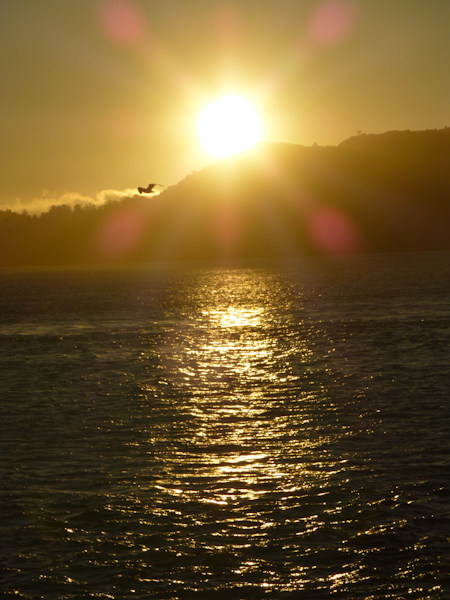
The company was so wonderful that we spent about three hours at dinner. But as each couple came for a romantic getaway, about 21:30, we all retired to our individual rooms.
A closer view of the foghorn building where Eric and I stayed.

The foghorn equipment.
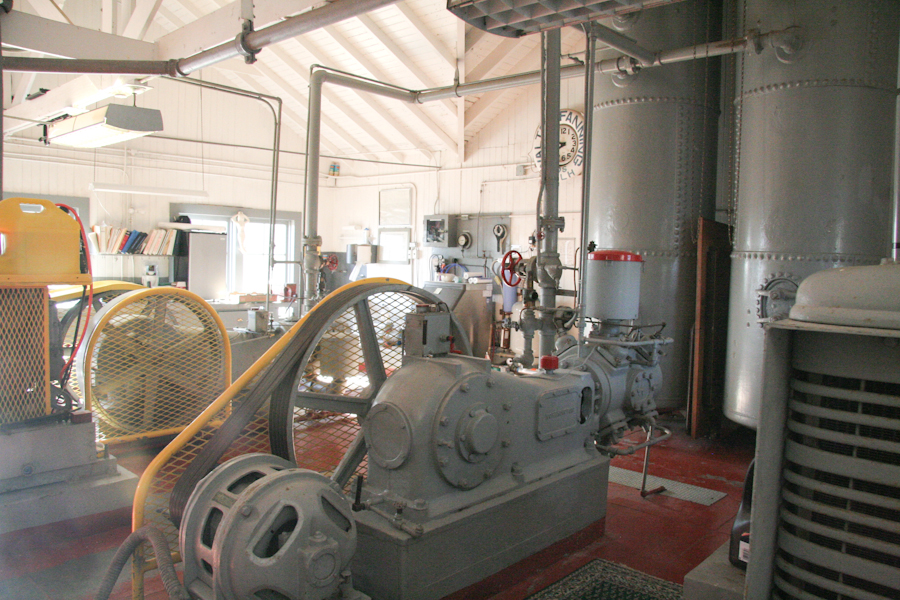
The lighthouse's original, 19th century fresnel lens.
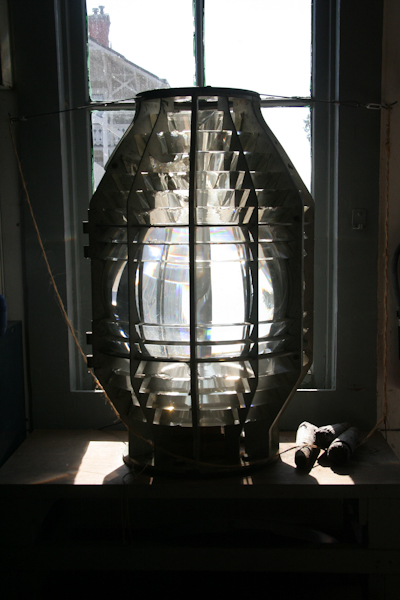
Our rooms, called Walter's Quarters, were small, but there were two of them. The outer vestibule had this antique rolltop desk. Notice how everything is lighthouse-themed, the doormat, the night light, etc.
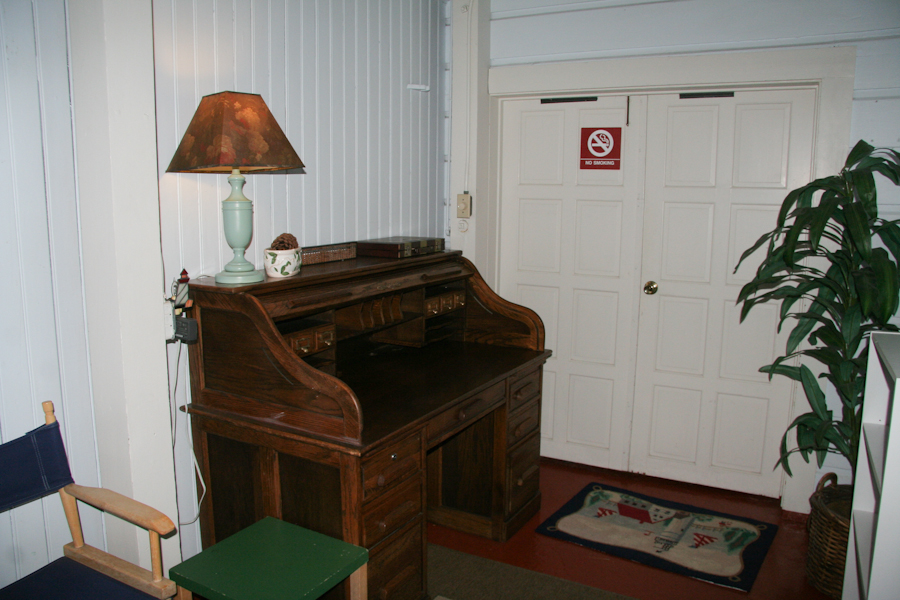
Our very small room, mostly bed. We did have a sink in the room, which was nice, although we had to go out into the equipment room to use the toilet. We loved the bedspread so much we bought one for our couch.
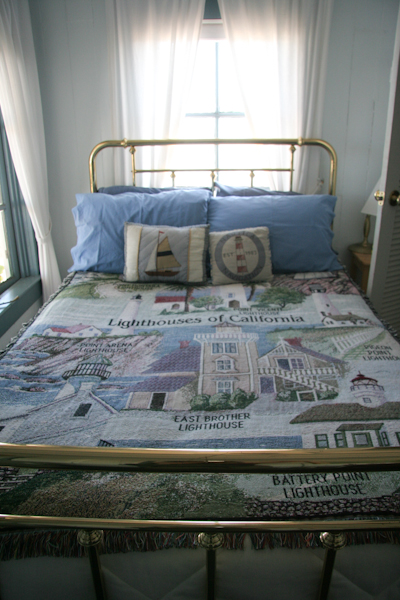
Coffee was promised at 7:30, and breakfast at 9:00. Of course, Eric and I did not make it over to the lighthouse building until a few minutes before 9:00. Before we sat down to eat, we admired the Harbor Seals on West Brother Island. Katherine and Samuel had watched them all day on Saturday.
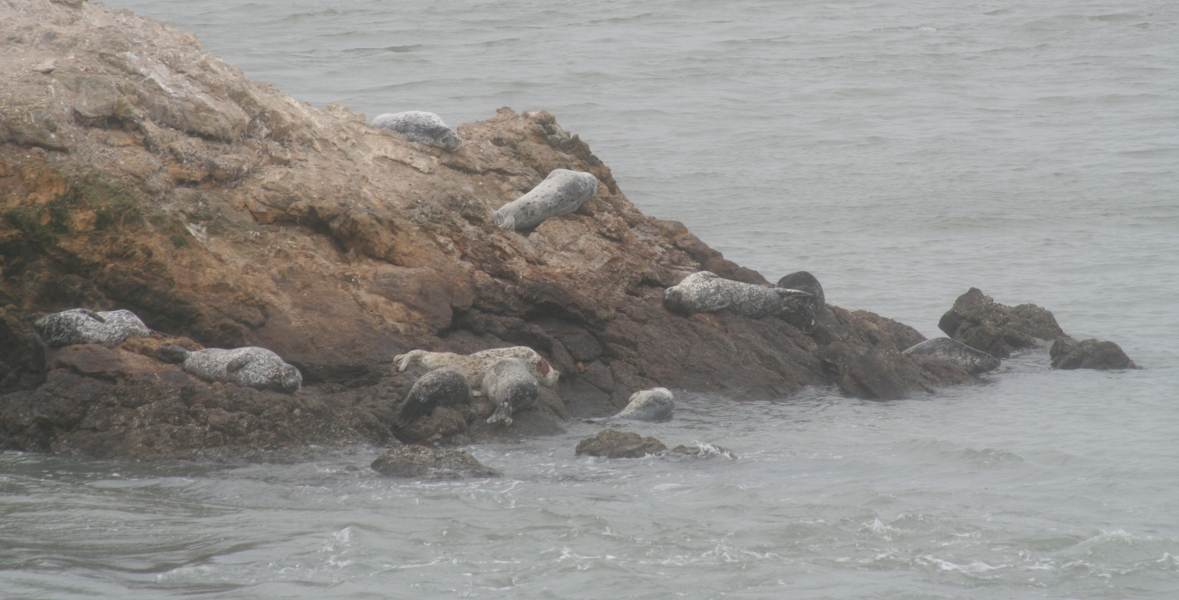
Breakfast was yoghurt, fruit and granola, and then a plate of blueberry pancakes and scrambled eggs. Although I had felt really stuffed the night before, I was still hungry enough to eat my eggs. A delicious meal!
After breakfast, Richard gave us a tour of the foghorn building and an explanation of the machinery. Samuel had enjoyed this so much the day before that he came along on the tour again.
First, Richard showed us the lenses. Here is the fresnel lens with the bulb inside lit up. The beveled glass planes of the lens focus all of the light in one direction, to make the sort of bright, tight beam that is desirable for lighthouses and stage lighting. If you look at the lens at an angle, the bulb looks relatively dim. But if you look at it straight on, you see this brightening effect.
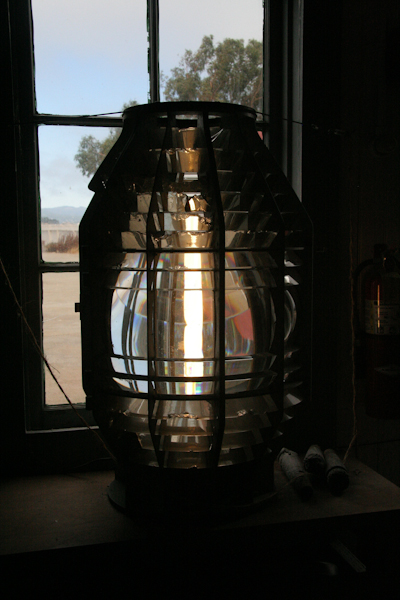
I lifted the camera over the top of the lens to get a picture of the inside of it.
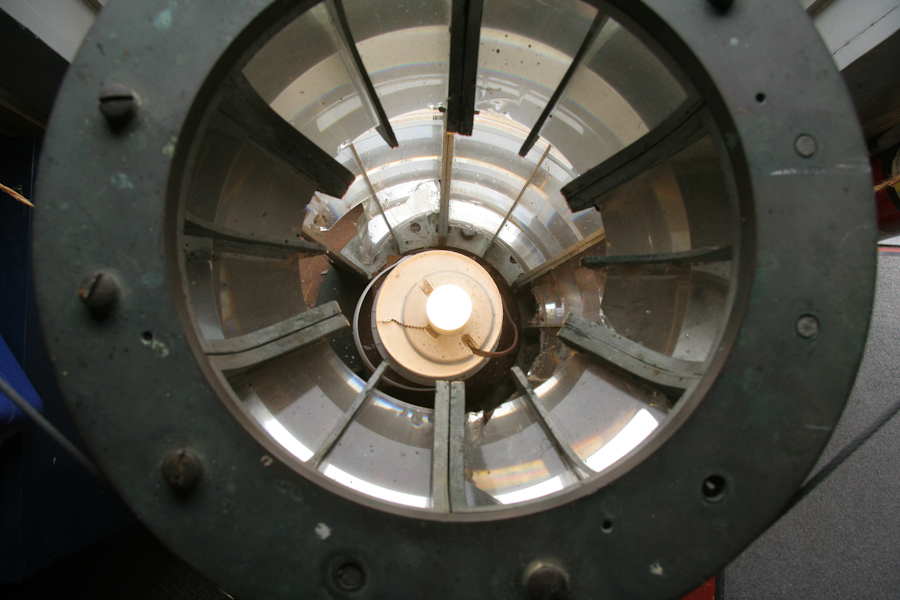
That 19th century lens had been retired some time ago and replaced by this newer lens. You'll see that it also has bevels to focus the beam. This is the lens that had been replaced seven weeks earlier with the new LED in the lighthouse tower.
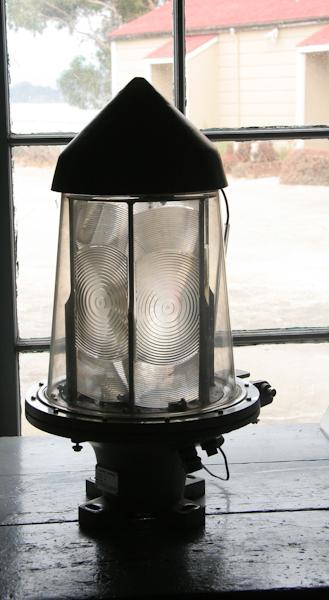
But even with those wonderful fresnel effects, lights don't work very well in the fog, so a lighthouse also needs a foghorn. East Brother Lighthouse Station currently uses a modern foghorn that operates only in the winter when it is foggy. But here is one of the two historic air-powered foghorns. The building has two, as a redundant system.
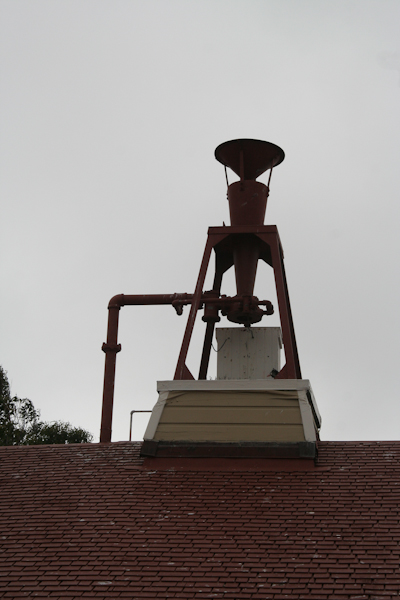
The pressurized air is stored in these giant tanks.
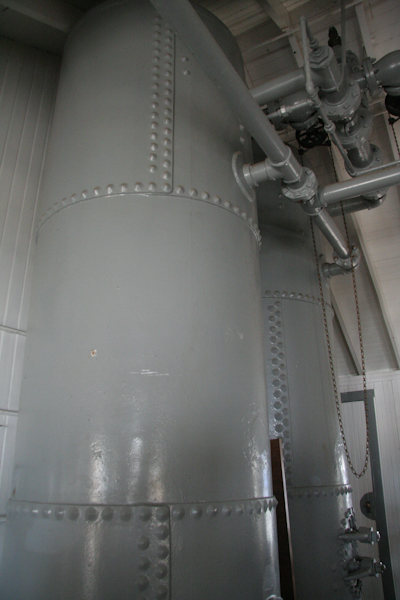
To create pressure, you need some sort of pump. This is one of two pumps, again as a redundant system.
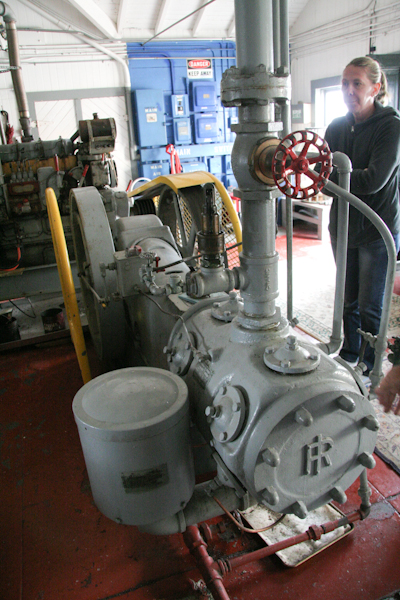
The pump is powered by this large diesel engine.
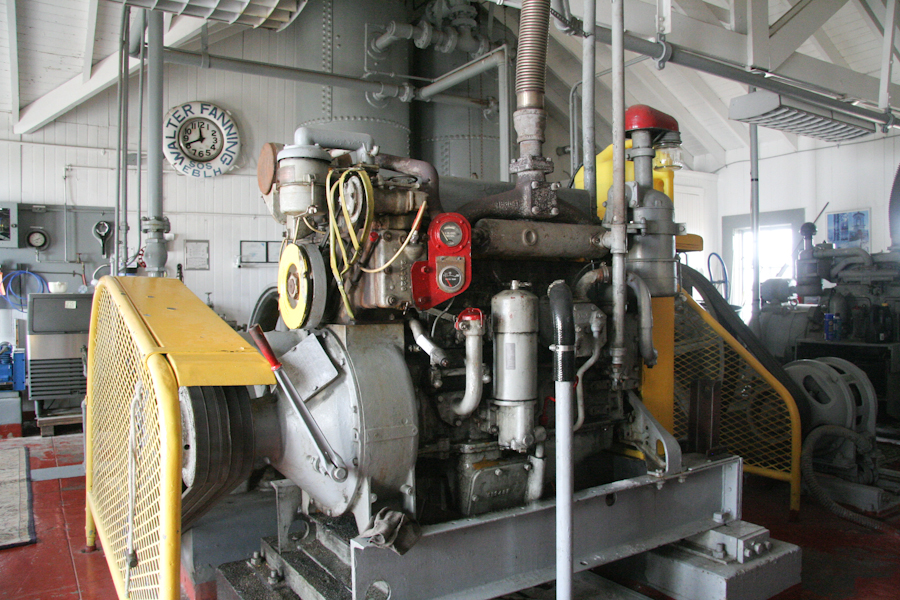
It's difficult to start diesel engines, and, when the lighthouse was built, electric starter motors had not yet been invented. So, the diesel engine has a smaller gasoline engine, called a pony engine, to start it. Of course, the pony engine also does not have an electric starter motor, so Judy had to start it by pulling on a cord, as one does with a lawn mower.
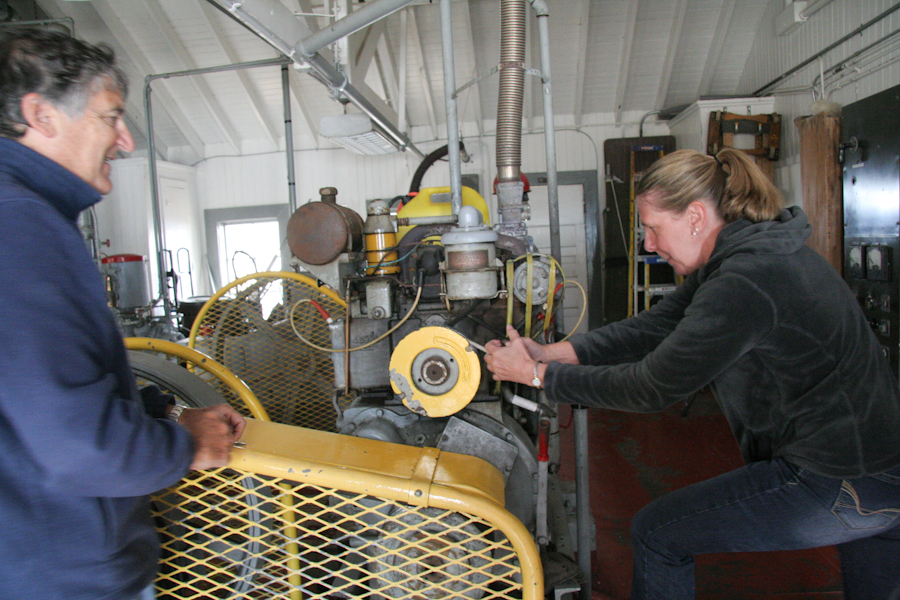
Soon, it became very loud in the foghorn building with the diesel engine going. It got even louder when Richard sent us outside to listen to the foghorn. At the appropriate moment, he motioned to us to put our fingers in our ears, because that two-tone horn is loud.
After this fun demonstration, Richard took us back to the Yacht Harbor in the little boat.
But Eric and I of course had one more mission: to find a geocache in the area. There are none on the island, but there was one on the mainland at the end of the access road. There was a place to park there, and, when we got out of the car, I saw this Red-tailed Hawk.
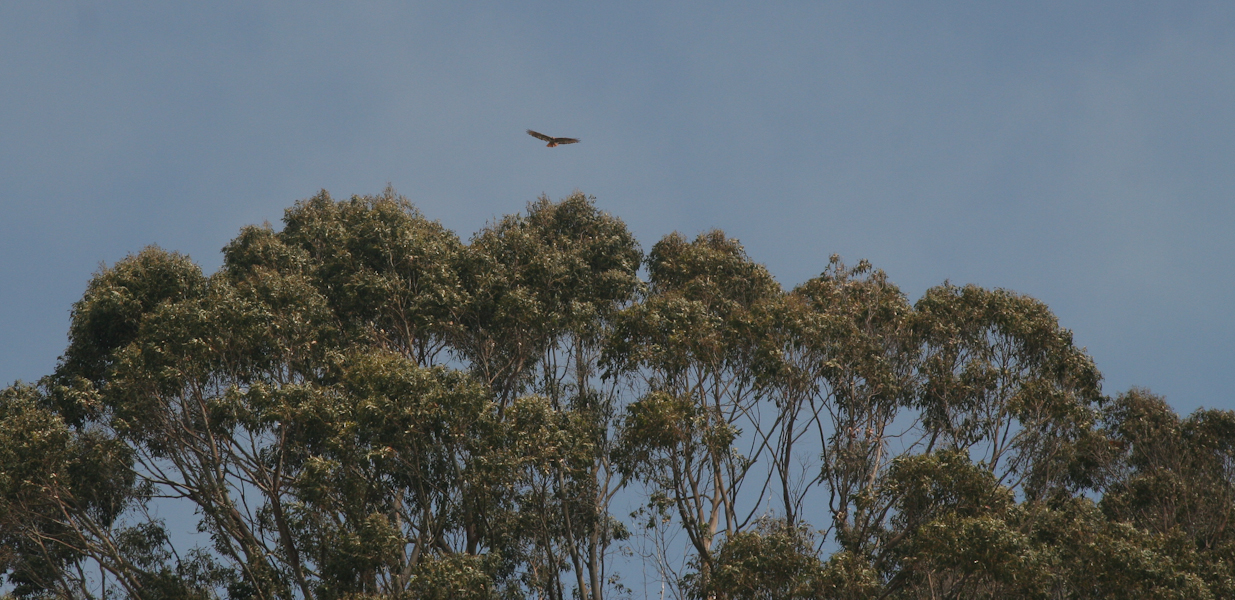
To get to the cache, we had to climb up this steep trail, and then through a bunch of brambles.
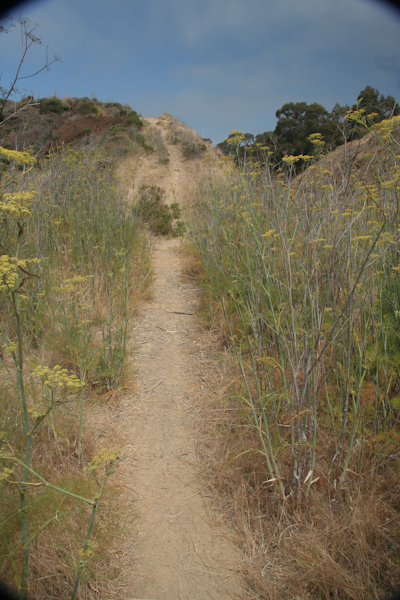
It took us a little while to find the cache, because the hide was extremely clever. But while we were looking for it, we had a nice view of East Brother Island and the lighthouse.
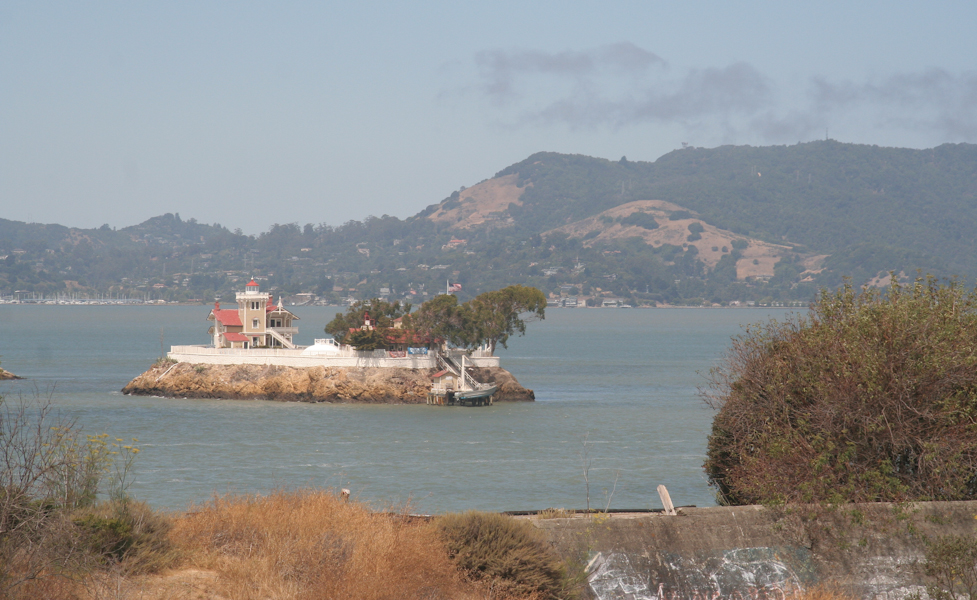
East and West Brother Islands, with the very tippity tip of the East Bay.
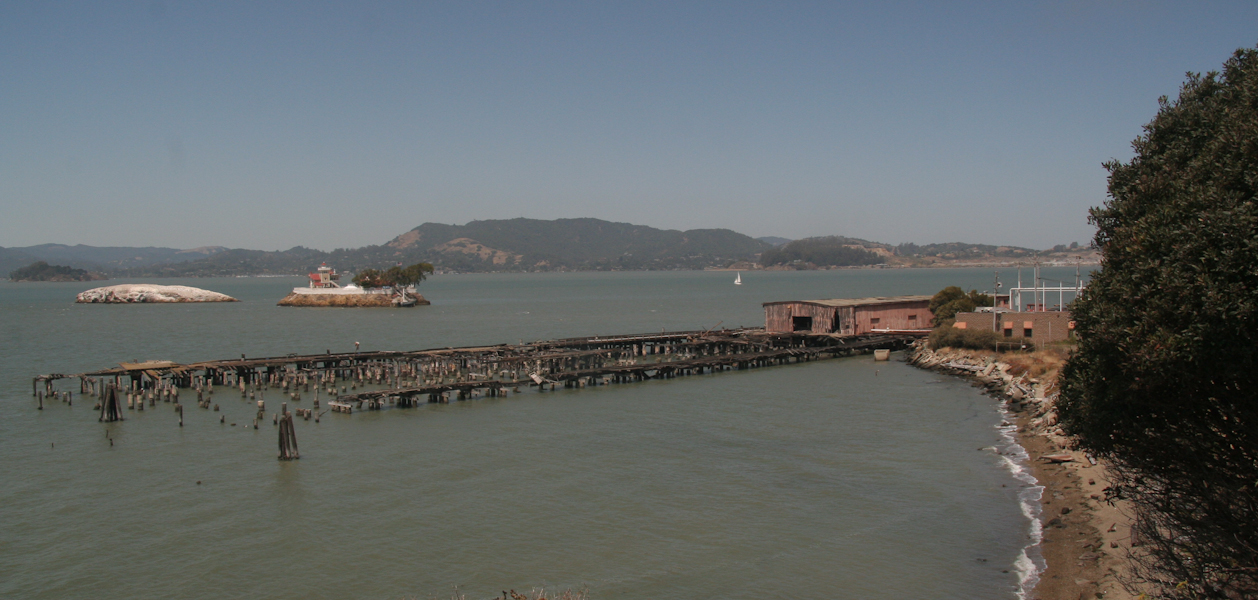
So, that was our little anniversary mini-adventure for 2012. Certainly a unique and fun place, and very close to home. We could even have ridden our bikes there, except that there is a stretch next to the foot of the Richmond Bridge where the only available road is I-580. Bikes are allowed on the shoulder there, and the traffic is usually slow because it approaches a toll crossing, but even I didn't want a ride quite that badly. Next year, we hope to travel at least a little bit further away, but it's nice to have such fascinating and romantic places to go right near home. We've spent a couple of anniversaries in hotels San Francisco, and I have to say this little East Bay place beat them both!